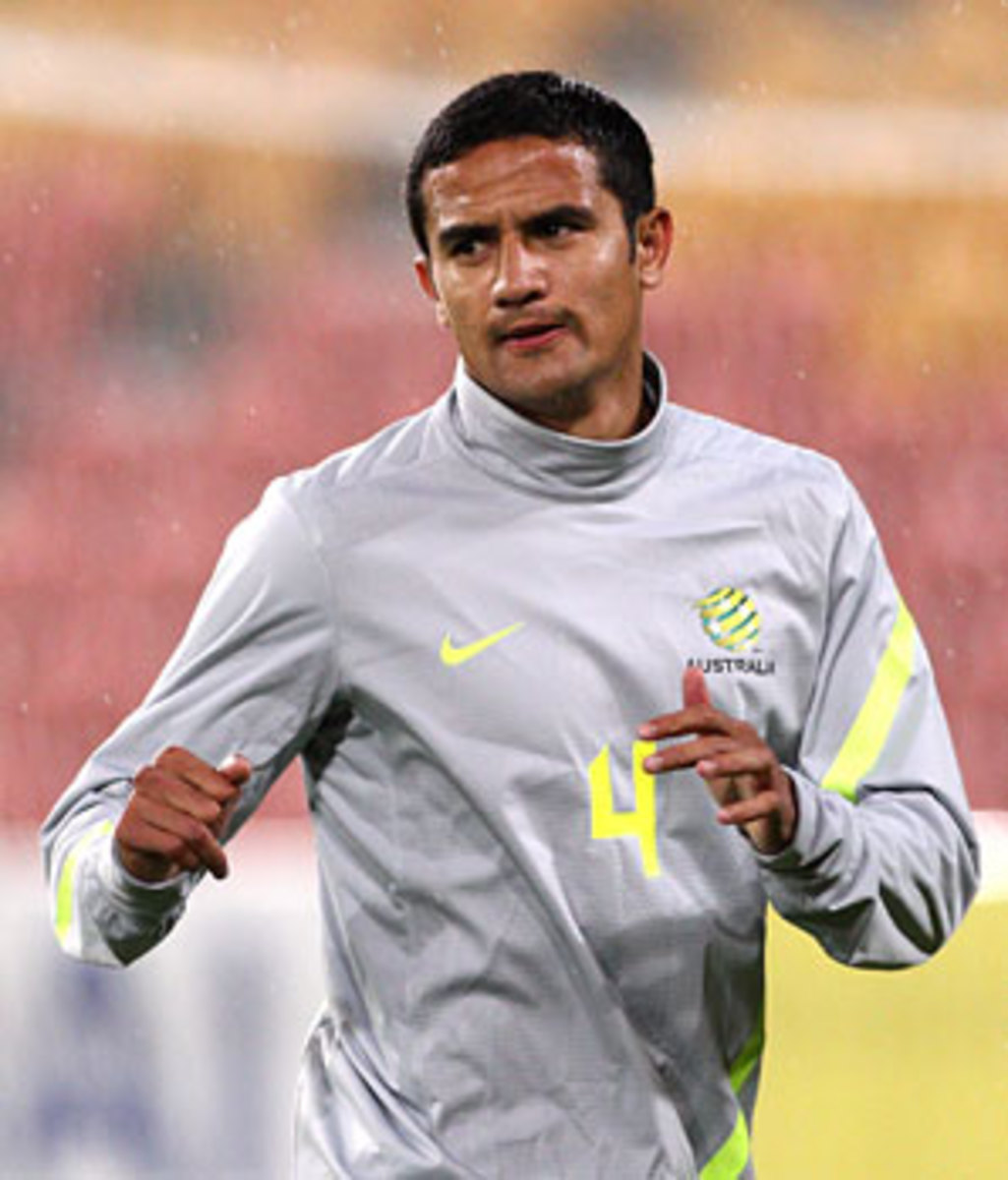Australia wonders what might have been as Cahill moves to Red Bulls
He could be the most eagerly awaited arrival into JFK from Liverpool since the Beatles landed in 1964, but Tim Cahill is no lovable mop-top with a cheeky smile but an all-action, all-tattooed midfielder with a penchant for assaulting corner flags and scoring vital goals.
After eight mostly excellent seasons in the English Premier League, the Australian is about to show New York what he can do while his homeland looks on from afar and wonders what might have been.
There was a tinge of regret down under mixed with surprise at the news that Cahill, now 32, had left Everton to sign for the New York Red Bulls. His departure seems to mark the end of an era. Cahill is the last of a generation of big Aussie stars to leave a big club in a big European league.
"I know his opportunities might have been limited this season but personally I'd have preferred to stay on in the EPL," said former Manchester United and Aston Villa goalkeeper Mark Bosnich. "Each to their own and Timmy very much has his own motivations of course."
Cahill was already an established Premier League star by the time he made global headlines on June 12, 2006. Coming on as a substitute with Australia trailing Japan 1-0 and facing almost certain elimination from the World Cup with a game against Brazil to come, Cahill struck two late goals to give his team an unlikely and famous victory.
He became a national hero among plenty of others in that Australia team, but now Mark Viduka has retired, Harry Kewell has returned to England after a year in Australia and is being linked with third-tier club Swindon Town, Lucas Neill has recently been released by Al Jazira in the UAE and Brett Emerton is in Sydney. Former Serie A midfielders Mark Bresciano and Vince Grella are in the Middle East and the English Championship respectively. Only Mark Schwarzer, now with Fulham, remains -- and with his 40th birthday fast approaching, the talented goalkeeper won't be there too much longer.
The shotstopper was the only representative from the big three leagues in the Aussie starting 11 against Oman in May. In 2006, there were 13 in the 23-strong roster. These days, Australians are just as likely to go to the Middle East, China, Japan and especially South Korea as Europe. This is not automatically a bad thing but it made Cahill all the more precious.
He was the sole star survivor and a hero to Everton fans as much as Australians. He was the one still popping up at the far post to score against Liverpool (he scored more against the Reds than any post-war Everton player) or to head home against Manchester City (over half his 56 Premier League goals were headers). The ultimate tribute to the player was that fans of all top-tier clubs in England wearily complained that Cahill always performed especially well against their team. That was just the way he played.
Injuries took their toll, as did the travelling around the world with the Australia national team, a source of frustration for Everton coach David Moyes. Last season, there were limited opportunities and the goals were not flowing as they once did. Even so, there were few signs he was leaving.
The sadness in Australia would have been replaced by delight if Cahill had headed home instead of crossing the Atlantic. "There's a slight selfish point of view that he's not coming back to the A-League but fully understandable," said Robbie Slater, who won the 1995 English Premier League title with Blackburn Rovers. "It was a selfish feeling that quite a few people will have. It's not a criticism at all -- it's just one of those forlorn hopes, I guess, that maybe he would have come back."
Now preparing for its eighth season, the A-League is still finding its feet. Attendances improved in season seven and three successive years of decline but it still needs all the help it can get with clubs losing money year on year.
The return of Cahill would have been a very big deal especially if he had joined newly formed club West Sydney Wanderers. Much rests on the success of this franchise, hastily put together by Football Federation Australia. Cahill would not have guaranteed success in a tough market but he would have put the team on the map in a massive way.
Maybe he talked to Schwarzer. In 2011, the goalkeeper referred to former striker John Aloisi, a well-travelled forward who had a tough time after joining Sydney's other A-League club, Sydney FC in 2008: "I have seen too many players go back home and it has not worked out. The biggest example is John Aloisi, and how he was treated so badly by people. You are up there to be shot down very, very quickly. I don't want to give anyone the opportunity to do that to me."
Cahill may or may not share that concern but it is certainly true that he does not have the best of relationships with the Australian media. After a recent game with Japan, he said he was bored of the criticism of the Socceroos. Even when collecting the MVP award for a 2010 World Cup win over Serbia, Cahill did not bother to conceal his disdain for an Aussie press pack. The writers were none too complimentary about him -- after he left of course; over the years they had seen the treatment meted out to countless corner flags.
It remains to be seen if A-League corner flags will ever get a Cahill pummeling. One thing is for sure however; their English counterparts are breathing a sigh of relief after eight seasons of torture. Now it is the turn of New York.






